Table of Contents
Linking verbs are essential components of sentence structure that connect the subject to additional information, such as a description or identity. Unlike action verbs, linking verbs do not express action but instead link the subject with a complement, helping to clarify the subject’s state or condition.
Understanding linking verbs is crucial for becoming expert at sentence construction in English grammar.
What is a Linking Verb?
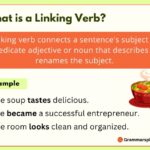
A linking verb connects the subject to information that describes or identifies it, without showing action.
Examples:
She is a teacher.
The soup smells delicious.
They were happy.
How to use linking verbs?
Linking verbs are used to connect the subject of a sentence to more information about it. They do not show action but link the subject to a word that describes or identifies it. This word is usually a subject complement, which can be a noun, pronoun, or adjective.
Subject + Linking Verb + Complement
The structure of a sentence with a linking verb is straightforward: the subject comes first, followed by the linking verb, and then the complement that adds information about the subject.
Examples:
- She is a teacher.
(The word teacher identifies the subject she.
- The cake tastes sweet.
(The word sweet describes the subject cake.)
- They seem happy.
(The word happy describes the subject they.)
Key Points:
Be clear about the subject: The subject is the person or thing being described.
Choose the right complement: Use a word that clearly identifies or describes the subject.
Avoid confusing linking verbs with action verbs: Linking verbs describe a state or condition, not an action.
Types of Linking Verbs
Linking verbs are essential in English grammar as they connect the subject of a sentence to additional information about it. They do not show action but instead link the subject to a word or phrase that describes or identifies it.
There are three main types of linking verbs:
1. Forms of “To Be” Verbs
These verbs are the most common linking verbs and include am, is, are, was, were, be, being, and been. They link the subject to its state or condition.
Examples:
- She is a doctor.
- They were happy after the event.
- The sky was blue all day.
2. Verbs of Sensory Perception
These verbs describe senses and include look, smell, taste, sound, and feel. They link the subject to a sensory description.
Examples:
- The flowers smell fresh.
- This soup tastes delicious.
- He feels tired after working all day.
3. Verbs Indicating a State or Change
These verbs show a state of being or a change and include become, seem, appear, remain, grow, turn, stay, and prove.
Examples:
- She became a successful entrepreneur.
- It seems like a good idea.
- He remained calm during the storm.
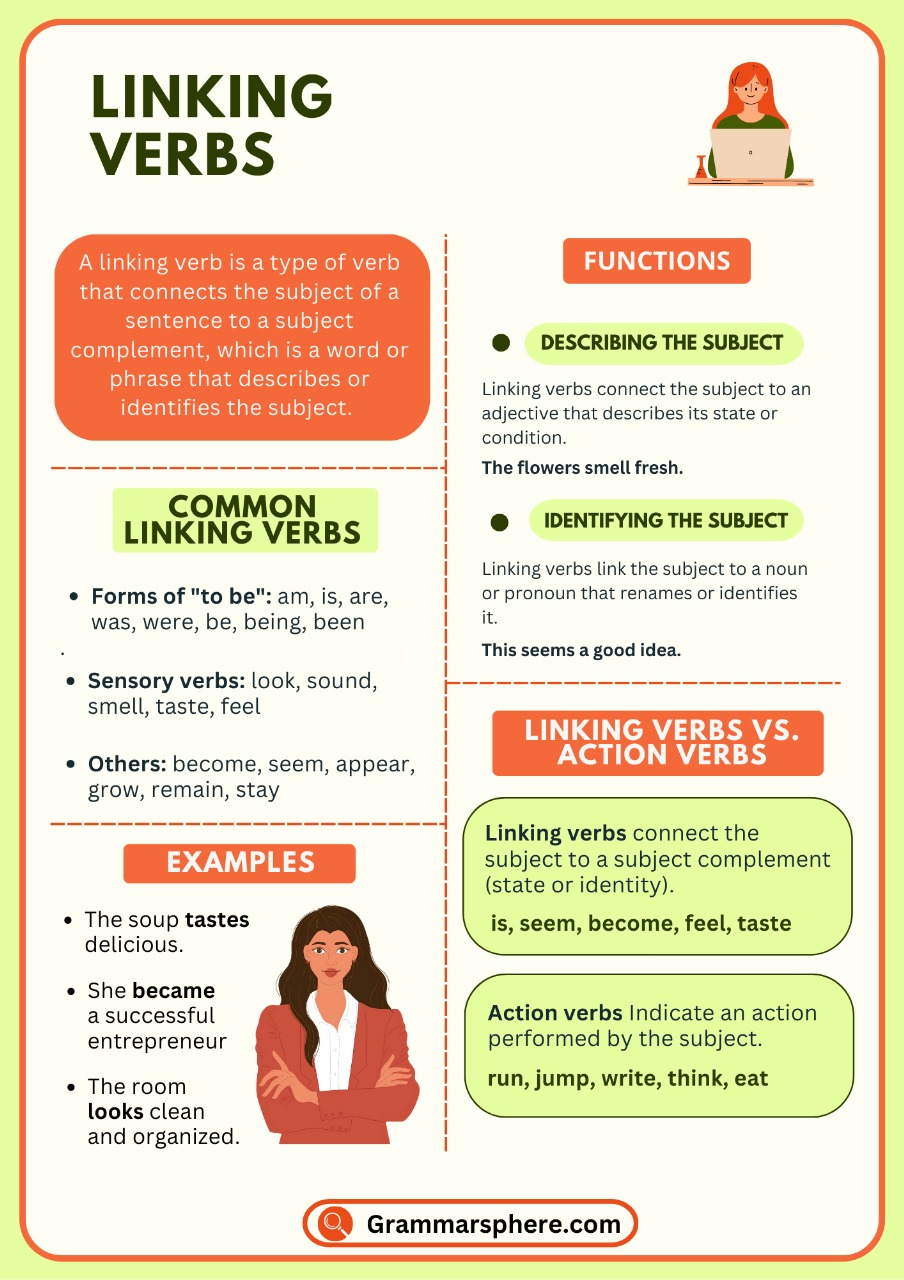
Rules for Linking Verbs
Linking verbs follow specific rules that help form clear and correct sentences. These verbs connect the subject to additional information and do not show action. Here are the basic rules to remember when using linking verbs:
1. Link the Subject to a Complement
A linking verb connects the subject to a word or phrase that identifies or describes it. This complement can be a noun, pronoun, or adjective.
- She is a nurse.
(The complement nurse identifies the subject she.)
- The sky looks clear.
(The complement clear describes the subject sky.)
2. Do Not Use an Object
Linking verbs do not take an object. Instead, they link the subject to its complement. This makes them different from action verbs.
- The soup smells delicious.
(The word delicious describes the soup; it is not an object.)
3. Keep Subject-Verb Agreement
The linking verb must agree in number and tense with the subject.
- He is tired.
. (Singular subject with singular verb.)
- They are ready for the trip.
(Plural subject with plural verb.)
4. Test with a Substitute Verb
To check if a verb is a linking verb, substitute it with is, are, or was. If the sentence still makes sense, the verb is likely a linking verb.
- The flowers smell fresh.
(The flowers are fresh—makes sense, so smell is a linking verb.)
- He remained calm.
(He was calm—makes sense, so remained is a linking verb.)
Common Linking Verbs
Linking verbs can be grouped into three main categories based on their function. They help connect the subject to additional information about it.
1. Forms of “To Be”:
These are the most commonly used linking verbs.
Examples:
- am
- is
- are
- was
- were
- being
- been
Sentence Examples:
- She is a student.
- They were excited.
2. Sensory Verbs:
These verbs describe senses and link the subject to a sensory detail.
Examples:
- look
- smell
- taste
- sound
- feel
Sentence Examples:
- The flowers smell amazing.
- This cake tastes delicious.
3. State or Change Verbs:
These verbs indicate a state of being or a change in condition.
Examples:
- become
- seem
- appear
- remain
- grow
- turn
- stay
- prove
Sentence Examples:
- He became a doctor.
- The weather remains pleasant today.
Linking Verbs Are Not Action Verbs
Linking verbs differ from action verbs because they do not show any action. Instead, they connect the subject to a complement that describes or identifies it. Action verbs, on the other hand, express activities or movements.
Key Difference:
A linking verb provides information about the subject’s state or identity, while an action verb tells us what the subject is doing.
Examples of Linking Verbs:
- She is tired.
(The verb is connects the subject she to the state tired.)
- The soup smells good.
(The verb smells links soup to its quality, good.)
Examples of Action Verbs:
- She runs every morning.
(The verb runs shows the action of running.)
- The dog barked loudly.
(The verb barked shows the action of barking.)
How to Identify
To check if a verb is a linking verb, replace it with a form of to be (is, are, was). If the sentence still makes sense, it is a linking verb.
- The flowers smell fresh. → The flowers are fresh.
(Makes sense, so smell is a linking verb.)
- He feels happy. → He is happy.
(Makes sense, so feels is a linking verb.)
Linking Verbs vs. Helping Verbs
Linking verbs
connect the subject of a sentence to a complement, which provides more information about the subject, such as a description or state. They do not show action but serve to link the subject to its condition or identity.
Helping verbs
also known as auxiliary verbs, assist the main verb in a sentence by indicating tense, mood, or voice. They are used alongside the main verb to form questions, negatives, or various verb tenses.
In short, linking verbs link the subject to additional information, while helping verbs work with the main verb to clarify its meaning or tense.
Why Linking Verbs Are Important
Linking verbs play a key role in English grammar because they help make sentences clear and meaningful. They connect the subject to additional information that describes or identifies it. Without linking verbs, sentences would lack proper structure and clarity.
1. They Describe States and Conditions
Linking verbs allow us to describe the state, condition, or identity of the subject without showing any action.
- The room is quiet.
- She seems happy.
2. They Help Explain Relationships
Linking verbs create a connection between the subject and its complement, making it easier to explain relationships or characteristics.
- He became a teacher.
- The soup tastes delicious.
3. They Improve Sentence Clarity
Linking verbs provide a clear link between the subject and the complement, ensuring the sentence conveys its meaning effectively.
- This idea sounds great.
- The sky looks beautiful.
FAQS About Linking verbs
What is linking verb and examples?
A linking verb connects the subject of a sentence to a complement (noun, pronoun, or adjective) that describes or identifies it. Linking verbs do not show action.
Examples:
She is happy.
They are students.
I am tired.
He became a doctor.
What are the 20 Linking Verbs?
The 20 most common linking verbs are: am, is, are, was, were, be, being, been, become, becomes, became, seem, seems, seemed, appear, appears, appeared, feel, feels, look, and looks. These verbs connect the subject of a sentence to a complement (such as a noun, pronoun, or adjective) that provides more information about the subject.
How do you identify linking verbs?
To identify linking verbs, look for verbs that connect the subject to additional information about it, such as a noun, pronoun, or adjective. If the verb doesn’t show action but instead links the subject to a description or identity, it’s likely a linking verb. Common examples include is, are, seem, and become.
How many linking verb are in English?
There are 20 commonly recognized linking verbs in English, including forms of be (am, is, are, was, were), as well as verbs like seem, become, appear, and feel.
How many types of linking words are there?
There are four main types of linking words:
Coordinating conjunctions (e.g., and, but, or)
Subordinating conjunctions (e.g., because, although, if)
Correlative conjunctions (e.g., either…or, neither…nor)
Conjunctive adverbs (e.g., however, therefore, moreover)
You May Also Like

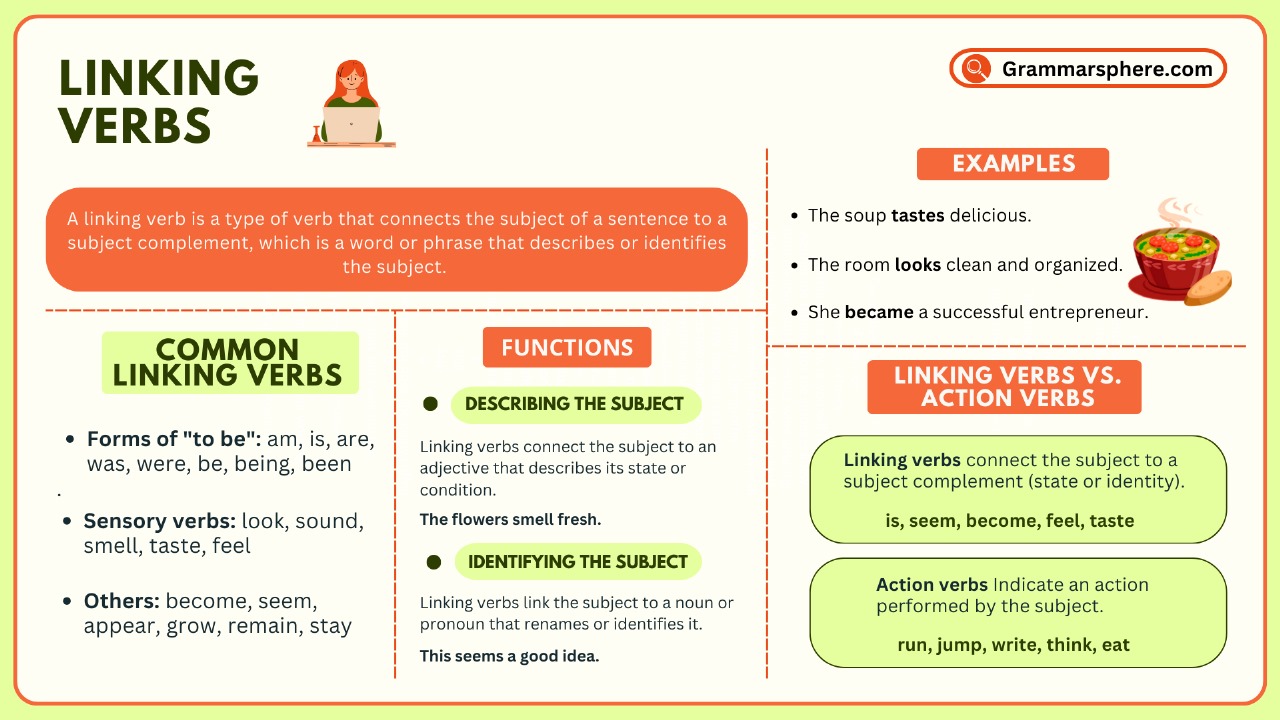
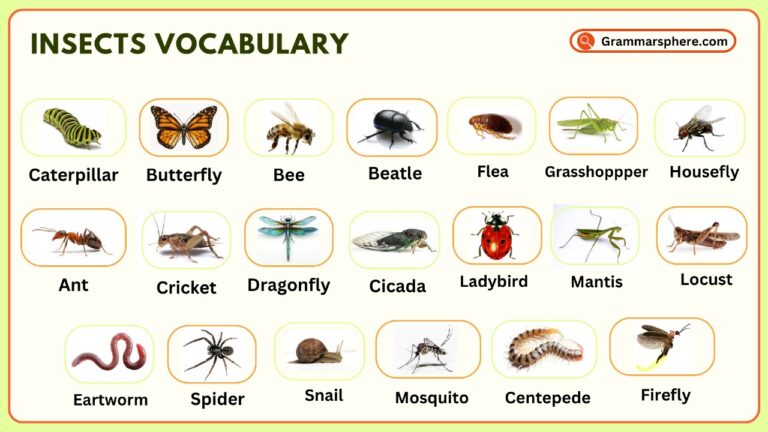
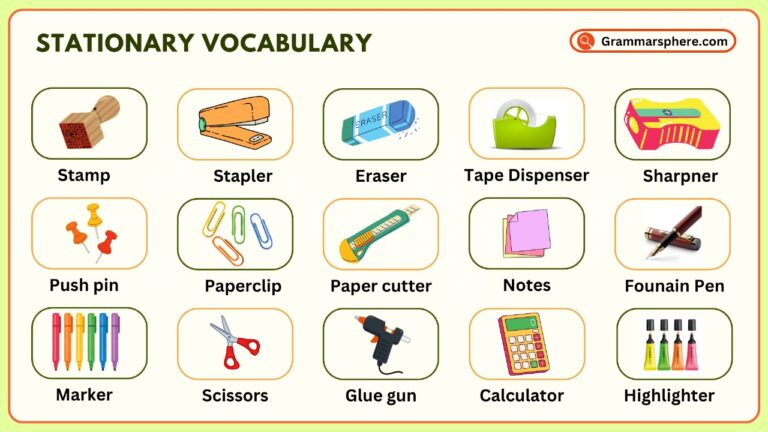
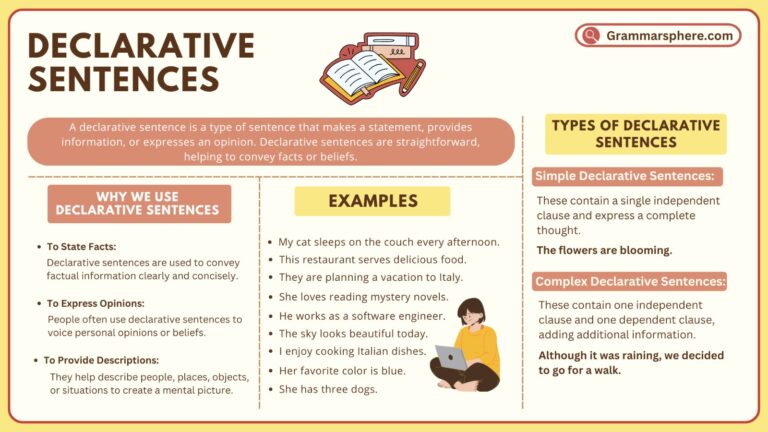
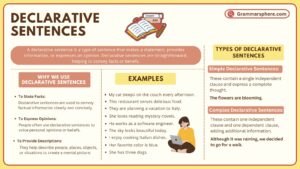
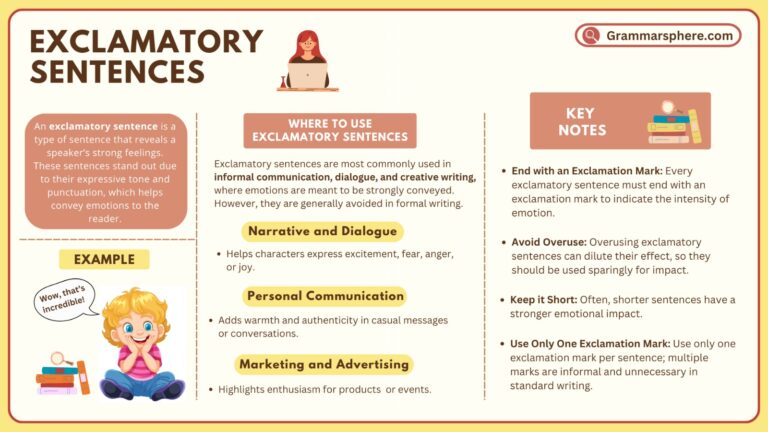

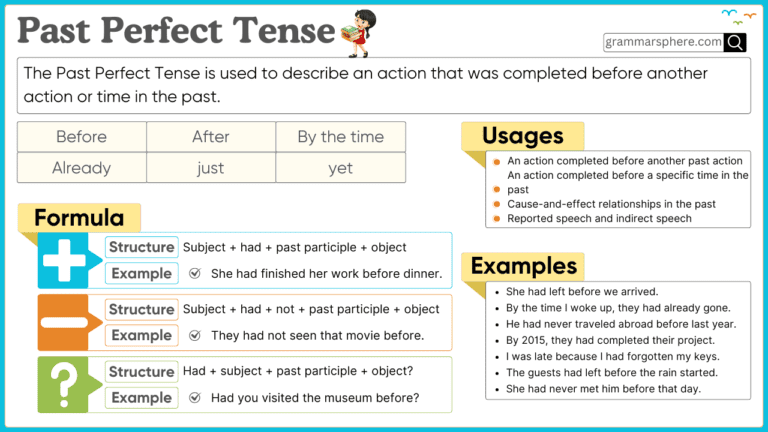
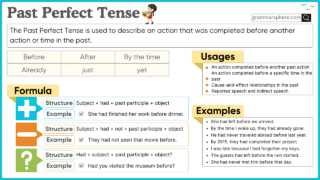
Leave a Comment